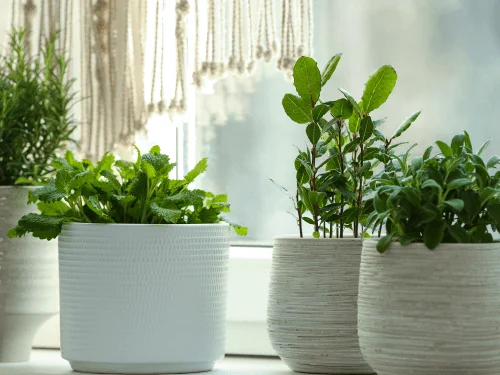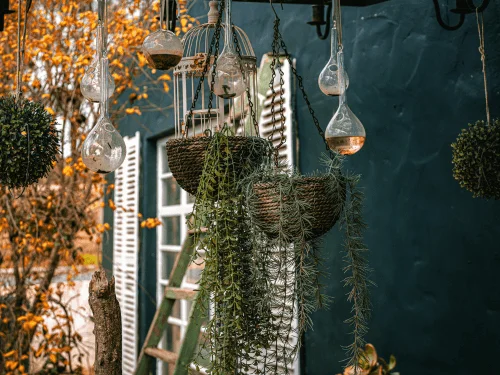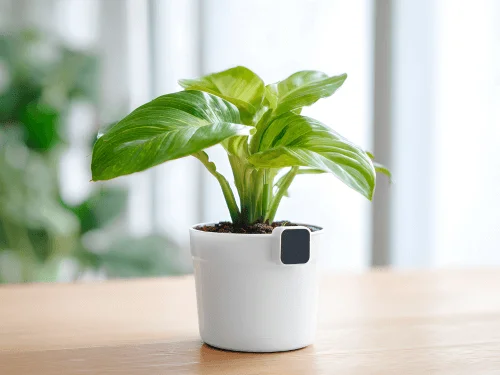Indoor Gardening
Indoor gardening is a great option for many individuals, allowing them to enjoy gardening in the safety of their own homes. There are numerous benefits to gardening indoors aside from the aesthetic value, which is why a lot of beginner gardeners tend to go for it.

Welcome to Seedling Squad where your gardening journey begins.
All gardeners start somewhere, and this is where you'll be able to learn the basics, allowing you to solidify a good foundation for your gardening projects.
Did you know...?
Visit our knowledge base if you want to learn the basics down to the most unconventional questions.
1. Can windowsill plants improve indoor air quality?
Yes, several houseplants, including snake plants, pothos, and spider plants, are known for their air-purifying abilities, removing toxins such as formaldehyde and benzene from indoor air. While plants won’t replace proper ventilation, they do contribute to improved air quality and add natural humidity to dry indoor environments.
2. How can I keep my windowsill plants healthy in winter?
During winter, light intensity decreases, and indoor heating can dry the air. Place your plants on windowsills with maximum sunlight, avoid overwatering, and increase humidity using a tray of water or a small humidifier. Sensitive flowering plants like geraniums or African violets may benefit from supplemental grow lights to maintain bloom and foliage quality during shorter winter days.
3. Can I grow flowering and foliage plants together on the same windowsill?
Yes, but pay attention to their light and water requirements. Group plants with similar needs—sun-loving succulents together and shade-tolerant foliage like snake plants and pothos separately. This prevents overwatering or underexposure and ensures all plants thrive. Rotating flowering plants occasionally can also help blooms develop evenly.
Can mango trees be grown in pots?
A: Yes, potted mango trees require large containers with well-draining soil. Regular repotting and sunlight exposure are essential to grow a healthy mango tree in a pot.
Can mango trees grow indoors?
A: Yes, young mango trees can grow indoors in large pots with sufficient sunlight or grow lights. Indoor mango trees may take longer to flower and fruit but are manageable with proper care.
How do I grow mango trees from seed faster?
A: Using warm conditions, consistent moisture, and polyembryonic seeds can speed up germination. Grafting onto seedling rootstocks is another method to grow mango trees faster and ensure quality fruit.
When do mango trees produce fruit?
A: Grafted mango trees may bear fruit in three to five years, while seed-grown trees may take five to eight years. Flowering and fruiting are influenced by climate, sunlight, and proper mango tree care.
1. How long does it take for daisies to bloom?
Plants grown from seed may take several weeks to produce their first flower buds. Most daisy plants will start to bloom in early summer, and with deadheading, they can produce a third blooming later in the season. Shasta daisies and oxeye daisies are especially reliable bloomers that can flower continuously throughout the season if given care tips such as fertilizing and proper watering.
2. Can daisies be grown in pots?
Yes! Potted plants are ideal if you have limited garden space. Make sure the pot has drainage holes and use well-draining garden soil. Daisies are also happy in containers if they get enough hours of full sun. Remember to monitor moisture: avoid too much moisture at the bottom of the pot.
3. What are the best companion plants for daisies?
Daisies pair well with bee balm, echinacea, and zinnias. These companion plants share similar sunlight and watering needs, helping your garden flourish throughout the season. They can also create a beautiful mix of single or double flowers alongside bright white petals of daisies.
Q1: How long does it take to grow a watermelon?
Watermelon growing time varies by variety. Most watermelons take about 75–100 days from planting seeds to harvest. Seedless watermelons often take slightly longer. Starting seeds indoors can give you a head start, especially in shorter growing seasons.
Q2: Can I grow watermelon in a pot or container?
Yes! Small or icebox varieties like Sugar Baby grow well in large pots (15–20 gallons). Ensure the container has good drainage, is filled with fertile, well-draining soil, and gets full sun daily. Water frequently, as pots dry faster than garden beds, and provide a trellis or allow vines to trail over the sides.
Q3: Can watermelons grow in raised garden beds?
Absolutely! Raised garden beds are ideal because they warm up faster in spring and provide excellent drainage. Space plants well, enrich the soil with compost, and mulch around vines to maintain moisture and control weeds.






































